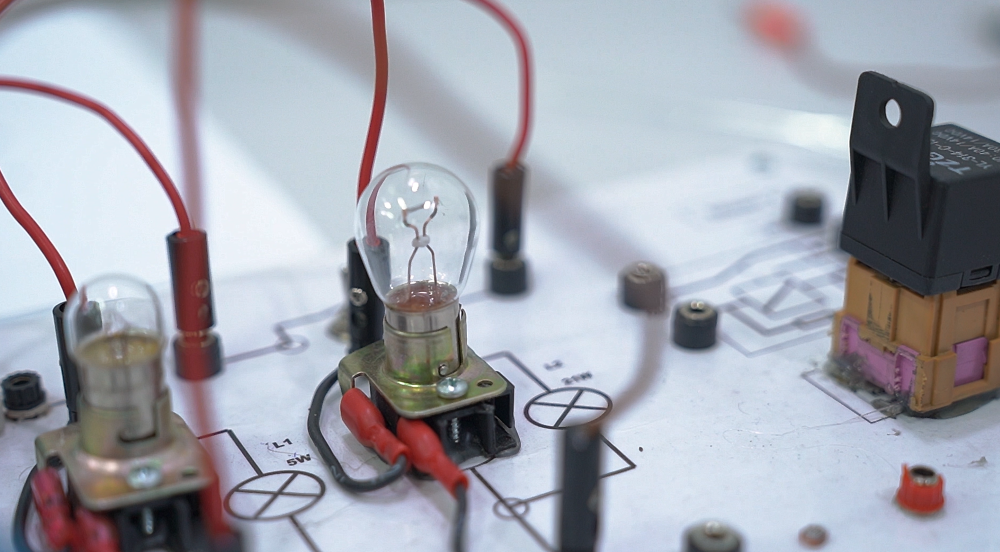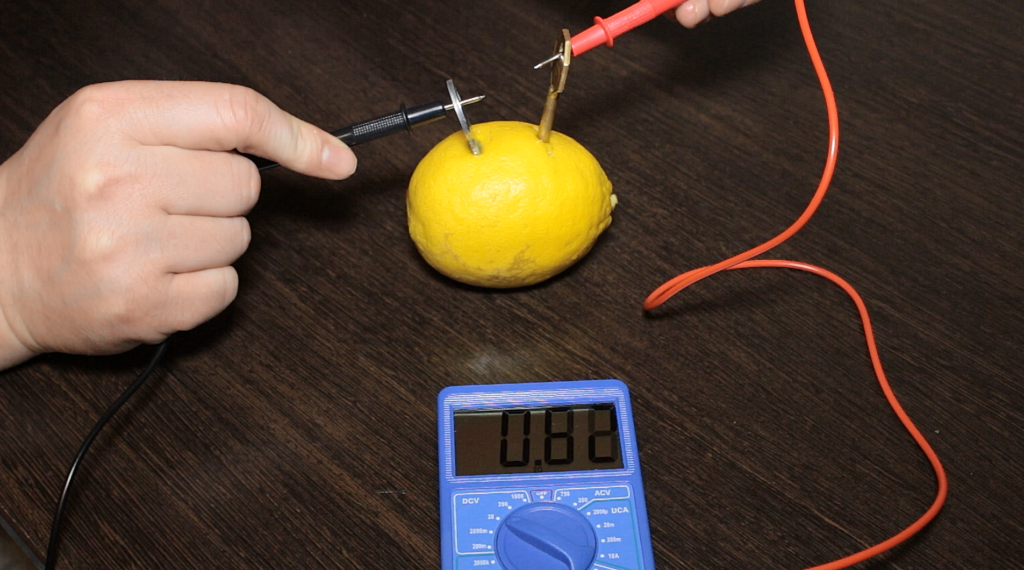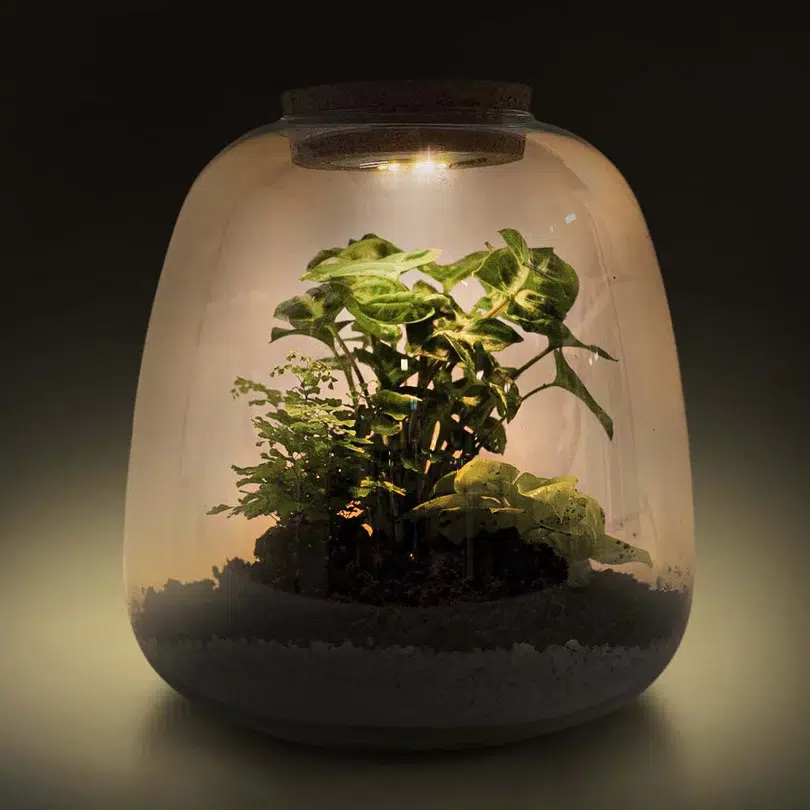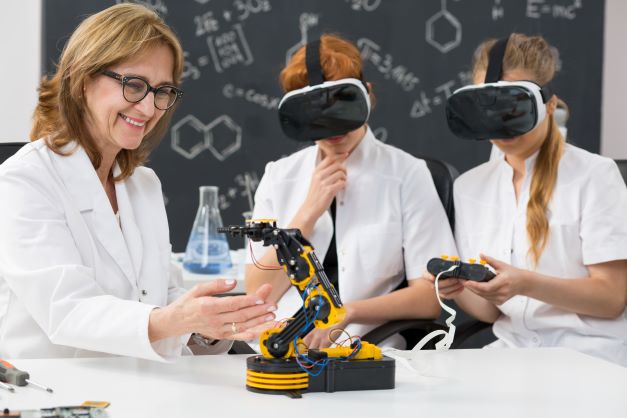Homeschooling nowadays needs to include all the subjects on the curriculum to be truly effective. When it comes to science, you can really push the boundaries and bring the world of scientific investigation to life! From chemistry and physics to biology and ecology you can ensure that your homeschooling sessions are both fun and educational. To get started, try out these five engaging homeschool science projects!
Build A Volcano.
This classic science project has been loved by kids (and adults!) for generations. Building a volcano is an easy way to create a tangible representation of the concepts behind volcanology and tectonics – plus, it is a great way to explore the effects of chemical reactions. Many household products—such as baking soda, vinegar, food colouring, and dish soap—are necessary ingredients to creating your own mini-volcano at home!

To get started, you’ll need small plastic bottle and a large bowl or shallow pan to hold the volcano. Cut the top off of the bottle, and then begin building your frame up around it. You can use modelling clay for this part. Intersperse layers of the clay with strips of newspaper dampened with water so that everything will stick together and be structurally sound when dry.
Once you’ve created your volcano’s frame, you can set it aside while you make the all-important erupting mixture which typically consists of baking soda and vinegar poured together in a baking pan–the reaction between them causes an eruption! Add food colouring along with some dish soap for thick, smoky effects to make your miniature mountain come alive. Enjoy watching your volcano go from dormant to very much alive and erupting!
To give your lesson on the power of natural forces an extra oomph, you can add a few teaspoons of baking soda to the erupting mixture that day to give your volcano an even bigger explosion. Once all is said and done, you can use the remaining modelling clay and newspaper strips as props around your volcano or even as decorations for a diorama. The possibilities are endless with this tried and tested experiment, that never fails to impress. You can pick up the National Geographic Volcano building kit on amazon here.
Construct A Circuit.
Learning about electricity is an essential part of science – mostly because everything we use in our day-to-day lives is powered by some sort of electricity. It is in fact so ubiquitous that we take it for granted and don’t even realised how much we depend on it (just wait for an EMP or solar flare to wake us up!).
When it comes to science on the whole, learning through practical experience—or hands-on learning—is one of the best ways to understand the properties and behaviour of electricity. This is, in essence, the definition of the scientific method. One of the best ways to introduce a student to both the practical scientific method and the topic of electricity is to go hands-on and create your own functioning electric circuit.

This project gives your child an in-depth understanding of electric current through fun exploration – and it’s really quite simple: You can create a basic circuit with easily found materials (such as copper wire, batteries, lightbulbs, and electrical tape).
Start with a short introduction about electric current and why it is an important aspect of science. Explain the basics of constructing a circuit, from connecting the wires to attaching the components. Encourage your little one to let their creativity flow by decorating the wires and battery holders—such as adding paint, washi tape, or whatever else you have in your arts and craft box.
Voltage output in a simple circuit can also be explored by increasing or decreasing the number of cells used in the battery holder. This is an excellent opportunity for your child to develop problem-solving skills by testing different configurations until they reach their desired effect—in this case, turning on and increasing and decreasing the brightness of their lightbulb!
NOTE: before the circuit is set up and working, it is important to teach them some key safety messages such as never touching the wires at the same time. Remind your little one to turn off the power once they are finished their experiments so their circuit doesn’t overload. As always with any kind of electricity, make sure there is always adult supervision when constructing the circuit and monitoring experiments.
All-in-all it’s great fun and will help your child to realise the importance of power, electricity and having lights to help us navigate those dark nights! We recommend the Montessori Electric Circuit kit, which comes with all the safety considerations needed to give you peace of mind.
Make A Battery From A Lemon.
This is one experiment you won’t forget! In this awesome science project, kids will learn more about electricity and how electron transfer works, simply by making a battery from a lemon. To start, carefully cut a lemon in half and poke copper and zinc electrodes into it—like pieces of metal coat hangers or keys, and grab them with alligator clips as you can see in the image below.
In the image you can see a device called a voltmeter, which measures the amount of electricity (potential difference) running through this simple circuit, powered by the lemon. You can then connect these leads to a low voltage lightbulb or an LED—and soon you’ll see the light bulb illuminating the room!

Most children think electricity only exists in lifeless pieces of technology, Nonetheless, this homeschool science lesson will illustrate the basics of chemical energy and help kids develop their understanding of how electricity works and that even organic objects can create and conduct electricity. Kids will also practice science inquiry skills as they consider questions like why did the bulb light up and what other fruits could we use as a 20-volt battery? Try making lemon batteries with various fruits for comparison and discover which fruit makes the best battery!
To make a lemon battery you will need two metal electrodes (we used aluminium and copper keys pierced through the lemon), electrical wires and a low wattage bulb socket. Attach one end of each wire to the electrodes and attach the other end to the bulb socket. Finally, squeeze the lemon and observe what happens – if everything goes well, you should see the bulb light up!
Through this activity, kids can observe first-hand how chemical energy is converted into electrical energy – seeing is believing! Have them interpret their results by suggesting reasons why their experiment worked or failed. Ask them to think if this could be used as an alternative source of electricity, discuss potential improvements or even research how citric acid batteries are already in use today.
Investigating Magnetic Forces.
Studying magnetism is another great way for kids to build interest and knowledge in science. Start by acquiring a simple magnet from any educational supply store or online shop. Make sure that you have different sizes of bar magnets and other magnetic objects. Then, investigate the fascinating possibility of magnetism using everyday objects like paperclips and nails to examine the strength and range of magnetism’s properties.
This hands-on experiment will help students learn about repulsion, attraction, and the connection between magnetic fields and electricity. Also invite them to investigate why the Earth itself is one big magnet and that’s why we have a North and South Pole and why compasses work and help us navigate the globe.

First, demonstrate to your students how a bar magnet attracts negative substances such as paperclips and nails. Explain why it does so by discussing the theory of a magnetic field and the presence of pole particles in any magnetic object. Then let them explore and experiment with different objects to find out more about magnet situations.
Challenge your students to come up with their own ways to assess what objects are attracted or repelled using their newfound understanding of magnetism. This interactive approach will help children better understand how magnetic forces work and appreciate how useful they can be for a variety of practical tasks.
Encourage your students to test different objects such as coins, screws, or other hardware and investigate how much magnetic strength is needed for them to be attracted or repelled by the bar magnet. Discuss with them why items like plastic and wood are not affected by magnets at all. Help your kids understand that it’s essential to be very careful with magnets and know when it’s necessary to wear protective clothing like gloves so that fingers don’t get pinched unexpectedly between two strong magnets. Our favourite pre-made magnet set is the Learning Resources Set designed for 8-12 year olds.
Design An Ecosystem In A Jar.
A jar ecosystem is a great way for your kids to learn the basics of the natural world and its many interconnected systems. It’s also fun! Start with a clean, wide-mouthed mason jar, then add soil, rocks, and other materials to create a mini habitat. Finally, teach your children about biodiversity by adding plants, insects, or other small animals like snails or miniature frogs to gain first-hand experience in caring for an environment. Monitor the jar over time and see how different elements interact within this unique habitat.

Jar ecosystems let your homeschoolers develop scientific skills like observation, hypothesising, analysing data, and more. As they chart the changes that take place in the jar, encourage them to write their observations down and then analyse their findings. This can also be a good way for them to learn about the physical and chemical processes that occur in an ecosystem.
For example, they can observe how energy moves through organisms and how food webs interact. After monitoring their jar ecosystems over several weeks, have your children create presentations or reports of their findings so they can share what they’ve learned with family and friends!
To make a jar ecosystem, you’ll need soil, items from nature like twigs and stones, dried leaves or grass clippings, a few drops of water and some small plants. Secure everything in the jar with an air-tight lid and place it in direct sunlight. The soil grants your ecosystem its nutrient supply and the plants should be placed at the top of the jar so they get plenty of light to allow photosynthesis to occur. (This is a lesson in itself and you can also experiment by placing different plant types at varying levels in the jar!)
Your children should talk about what they expect will happen to the organisms inside when different elements are added to their environment. This part is crucial for helping them understand how living things depend on each other and how natural cycles work. It also encourages a deeper appreciation for the natural balance in our global ecosystem and helps prepare them to be aware of the many issues we face with the environment and climate change, as well as the preservation and conservation of forests and endangered animals.
There are many ready-made ecosystems in a jar available but if you want to make your own, we recommend the Terrarium Starter Kit that allows you to grow Bonsai Trees, Succulents and Cactus! Enjoy!
At Online Super Tutors, we offer tutoring services for both adults and kids in a variety of subjects: Whether you’re looking to improve your grades, prepare for a standardized test, or simply want to learn something new, super tutoring can help. So why wait? Get in touch with us today and start your journey towards academic success!
Please see our Google reviews below as an example of what our clients feel about us:






